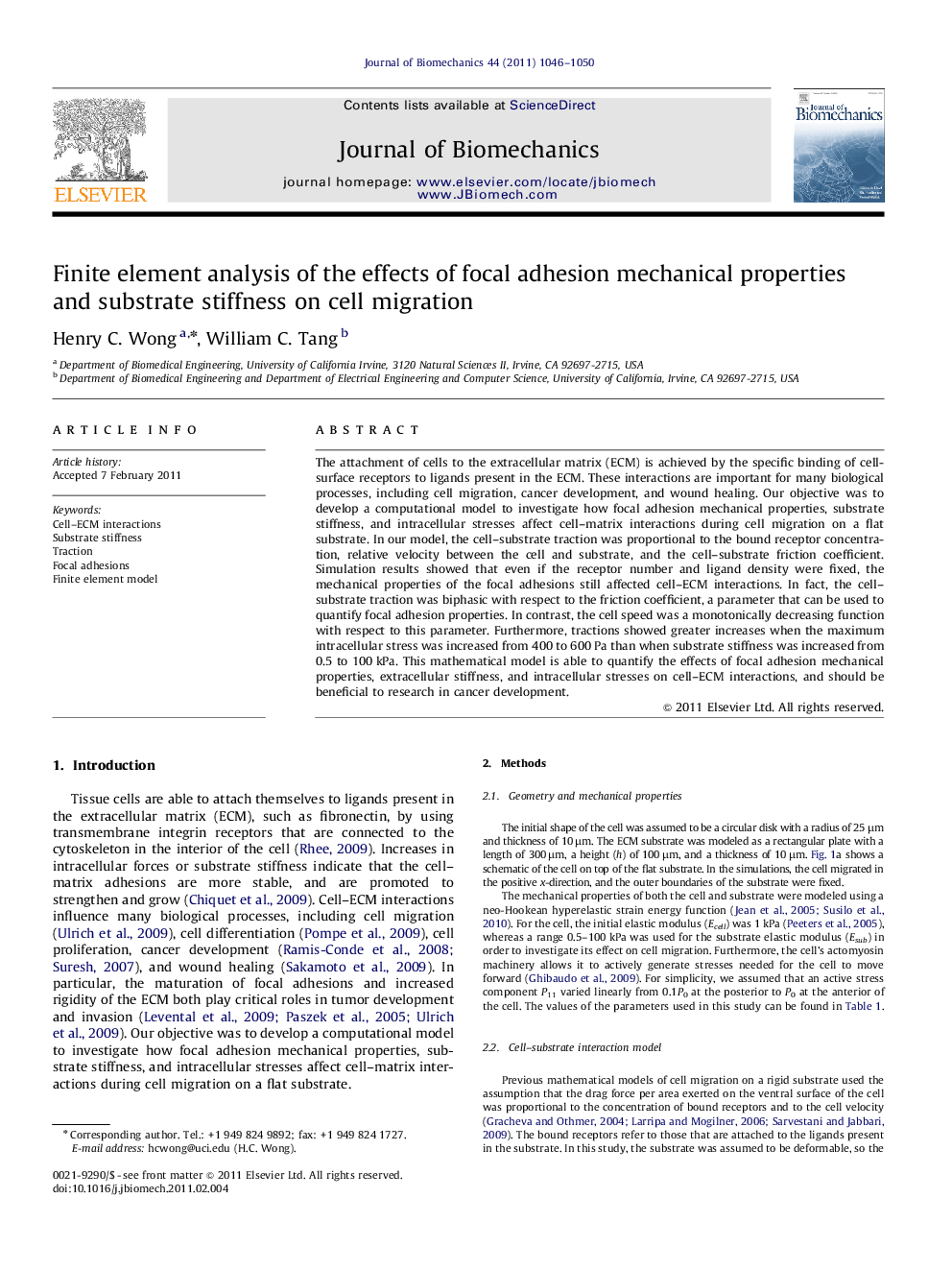| Article ID | Journal | Published Year | Pages | File Type |
|---|---|---|---|---|
| 10433354 | Journal of Biomechanics | 2011 | 5 Pages |
Abstract
The attachment of cells to the extracellular matrix (ECM) is achieved by the specific binding of cell-surface receptors to ligands present in the ECM. These interactions are important for many biological processes, including cell migration, cancer development, and wound healing. Our objective was to develop a computational model to investigate how focal adhesion mechanical properties, substrate stiffness, and intracellular stresses affect cell-matrix interactions during cell migration on a flat substrate. In our model, the cell-substrate traction was proportional to the bound receptor concentration, relative velocity between the cell and substrate, and the cell-substrate friction coefficient. Simulation results showed that even if the receptor number and ligand density were fixed, the mechanical properties of the focal adhesions still affected cell-ECM interactions. In fact, the cell-substrate traction was biphasic with respect to the friction coefficient, a parameter that can be used to quantify focal adhesion properties. In contrast, the cell speed was a monotonically decreasing function with respect to this parameter. Furthermore, tractions showed greater increases when the maximum intracellular stress was increased from 400 to 600Â Pa than when substrate stiffness was increased from 0.5 to 100Â kPa. This mathematical model is able to quantify the effects of focal adhesion mechanical properties, extracellular stiffness, and intracellular stresses on cell-ECM interactions, and should be beneficial to research in cancer development.
Related Topics
Physical Sciences and Engineering
Engineering
Biomedical Engineering
Authors
Henry C. Wong, William C. Tang,
